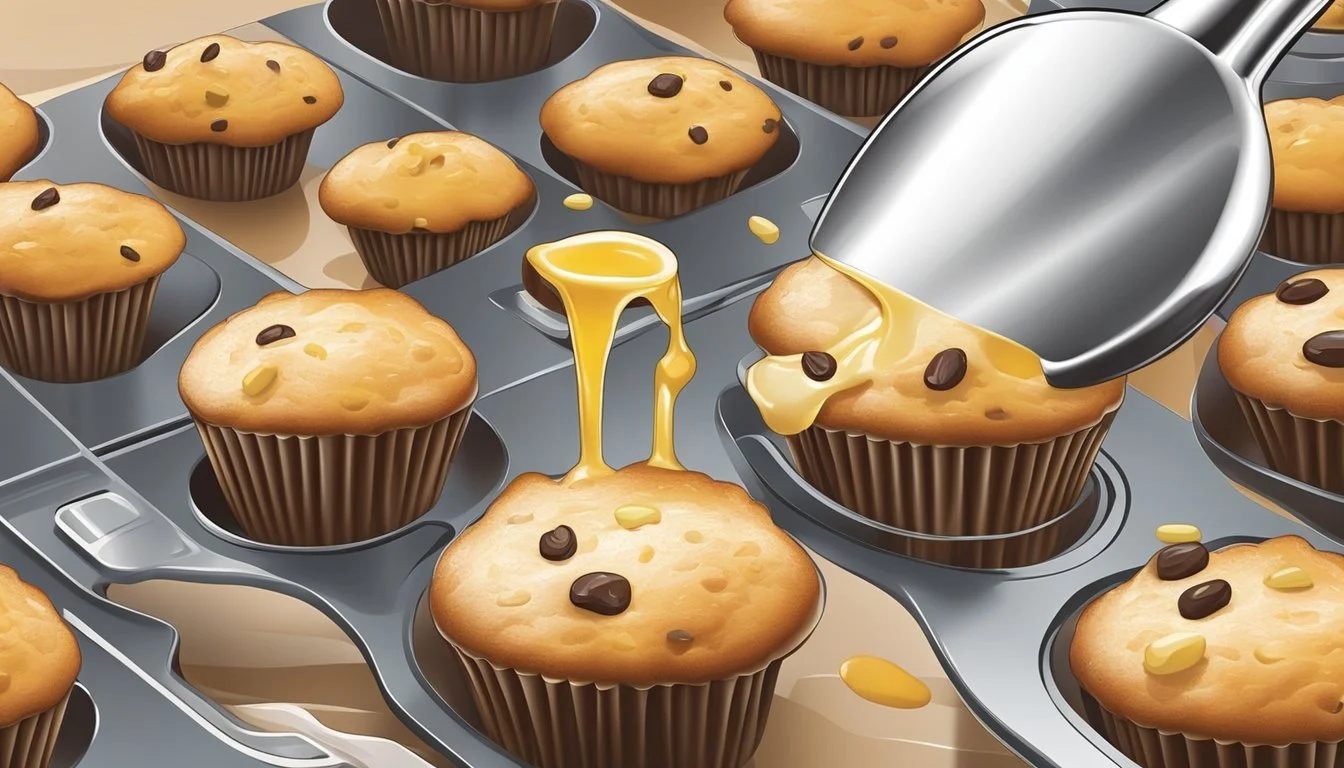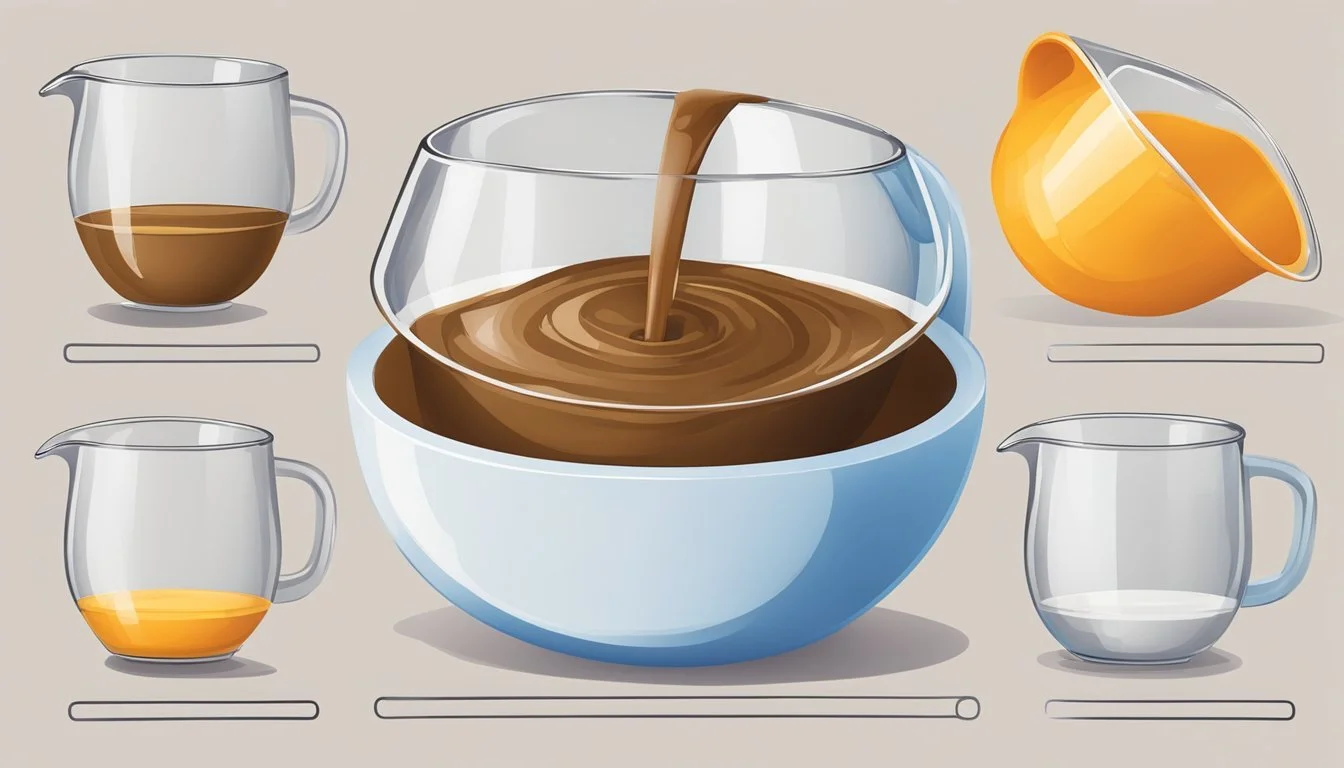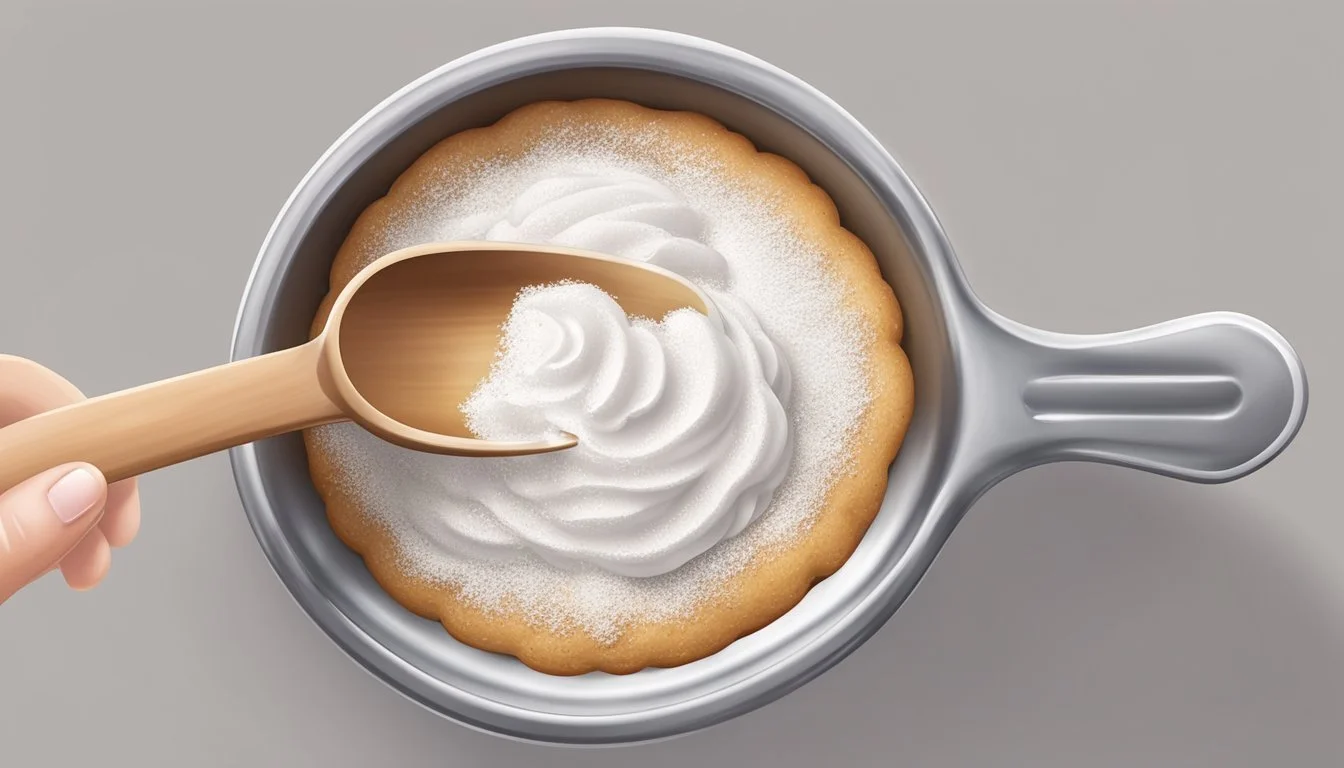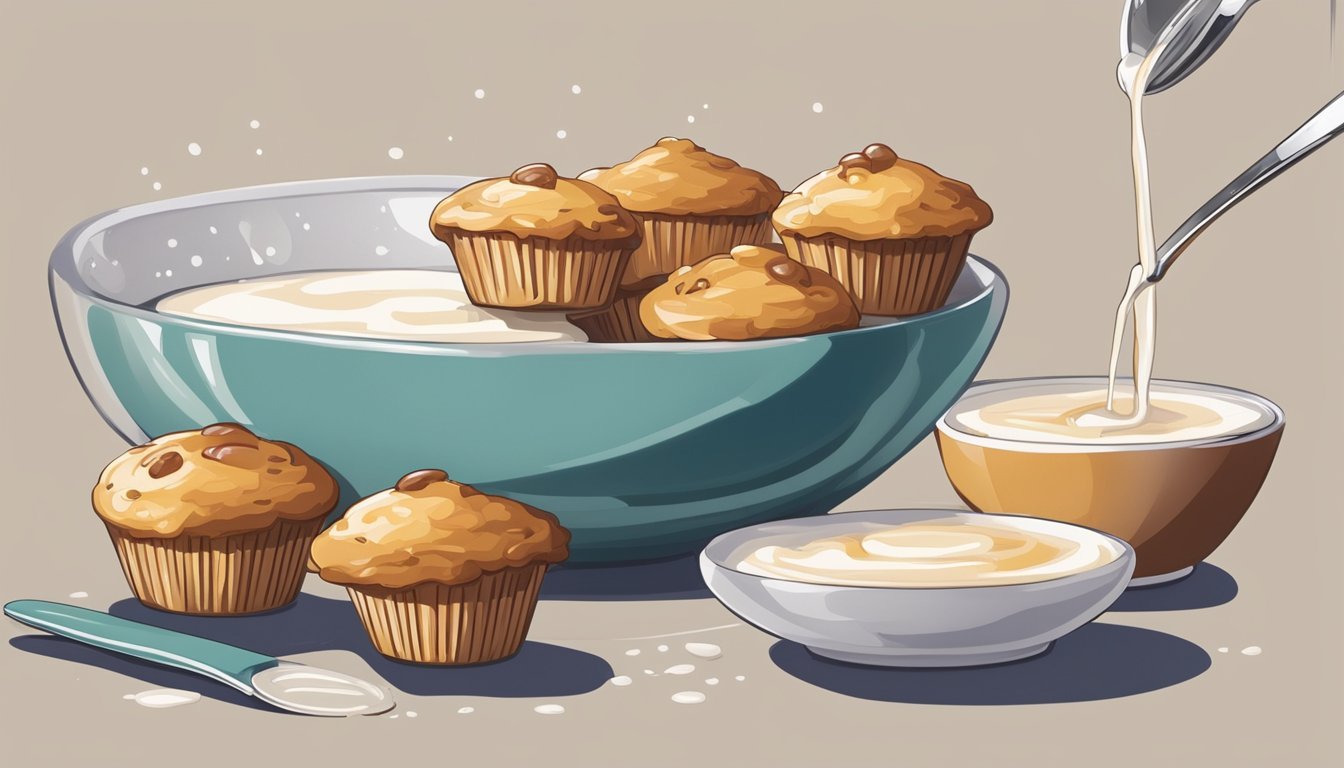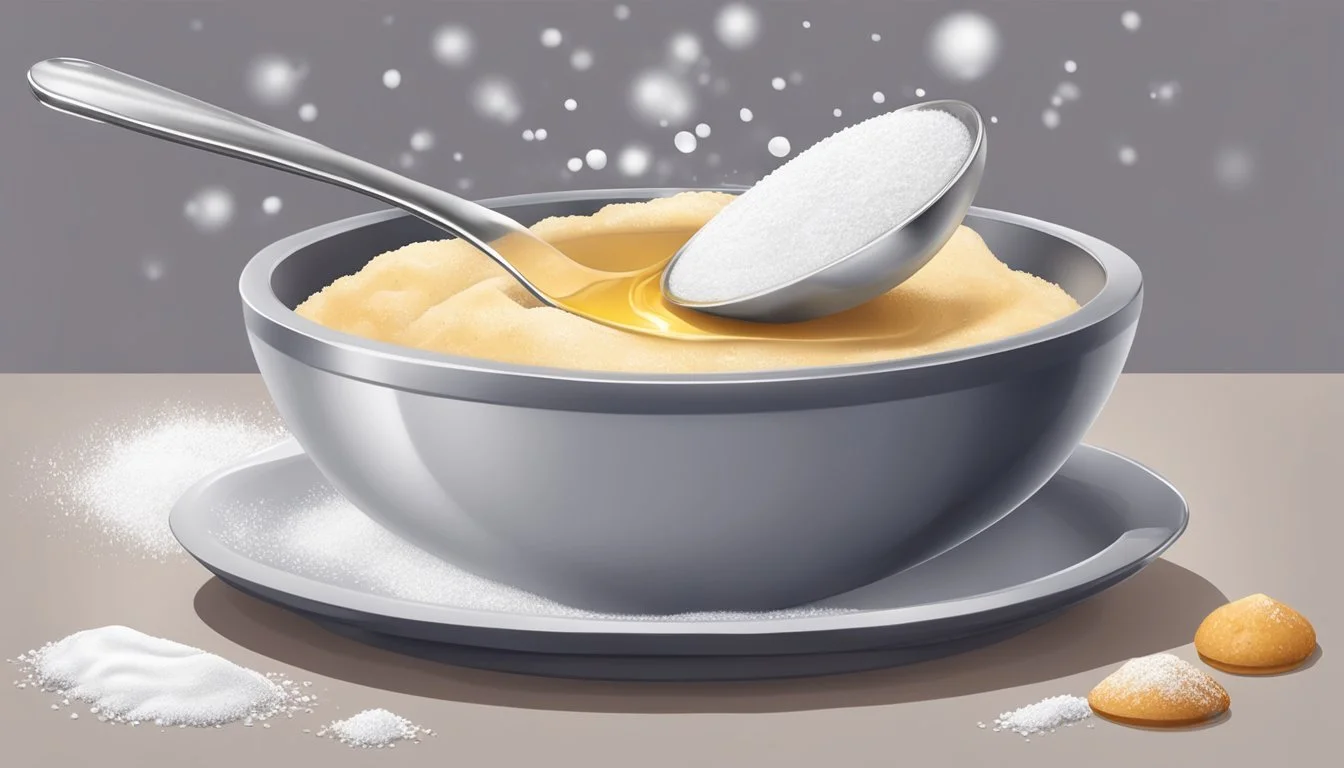How to Measure the Perfect Amount of Liquid for a Muffin Glaze
Precise Ratios for the Ideal Consistency
Creating the perfect glaze for muffins is both an art and a science. The right amount of liquid is crucial to achieving a glaze with the ideal consistency—not too thick that it doesn't drizzle, and not too thin that it seeps into the muffins. Bakers often face the challenge of measuring liquids accurately to ensure the glaze sets properly on top of the muffins, enhancing both their flavor and visual appeal. The process involves precision and an understanding of the ingredients at hand.
The foundation of a good muffin glaze begins with the ratio of liquid to sugar. Typically, the liquid can either be milk or water, and occasionally, flavor enhancers like vanilla extract are added to complement the sweetness. The liquid's role is to dissolve the sugar and achieve a smooth texture that will coat the muffins evenly. In baking, the exactness of measurements can make the difference between success and a less-than-desirable result, hence, precision in measuring liquids is paramount.
It is important to start with a base recipe that can be adjusted according to the baker's desired thickness and flavor. They should consider the muffins' flavor profile and the final look they aim for when deciding on the amount of liquid to be used. Adjustments are made by adding the liquid incrementally and mixing thoroughly until the perfect consistency is attained. This careful process ensures that each muffin is topped with a glossy, delectable glaze that is bound to impress.
Understanding Glazes
A well-crafted glaze enhances both the flavor and appearance of muffins. This section covers the types of glaze, their textures, and flavor profiles, ensuring that bakers can create the perfect finish.
Types of Glaze
Glazes come in various types, differing mainly in their base ingredients. The common bases include:
Sugar: A powdered sugar glaze is a classic option, combining sugar with a liquid to achieve a sweet coating.
Butter: Butter-based glazes add richness and can be made by melting butter and mixing it with sugar and flavorings.
Milk: Milk or water is often mixed with powdered sugar to create a simple glaze, with milk providing a creamier taste.
Texture: From Thin to Thick
The texture of a glaze is crucial and is controlled by the liquid-to-sugar ratio:
Thin Glazes: More liquid creates a thin glaze that is easily drizzled but soaks into the muffin.
Thick Glazes: Less liquid yields a thicker, more robust glaze that sits on top of the muffin.
To adjust consistency, add more milk to thin it out or more sugar to thicken it.
Flavor Profiles
Flavor additions transform a basic glaze into something extraordinary:
Vanilla: A touch of vanilla extract contributes a warm and aromatic flavor.
Citrus Zest: Lemon or orange zest can infuse a fresh and tangy taste.
Spices: Incorporating spices like cinnamon complements the sweetness of the glaze.
Utilizing a spectrum of flavors allows bakers to complement the muffin’s base and create a harmonious taste experience.
Essential Ingredients
Preparing a perfect muffin glaze requires precise measurements and a clear understanding of how each ingredient functions within the mixture. The correct balance of sugar, fats, and flavorings will determine the texture, taste, and setting characteristics of your glaze.
Choosing the Right Sugar
Sugar is the foundational element of a glaze, providing not only sweetness but also the structure. Confectioners' sugar is typically used due to its ability to dissolve quickly and create a smooth consistency without the need for heat. It's vital to sift the sugar before use to prevent lumps. The ratio usually starts with one cup of confectioners' sugar to two tablespoons of milk or water, adjusted according to desired thickness.
The Role of Fats in Glazes
Fats such as butter add richness and can modify the texture of your glaze. When using butter, it should be melted and thoroughly combined with the liquid ingredients prior to adding the sugar. The amount of butter used is generally small, approximately one to two tablespoons, to avoid a greasy consistency.
Incorporating Flavors
Flavorings such as vanilla extract and lemon juice play a significant role in enhancing the taste profile of your glaze.
Vanilla extract adds a classic sweetness and should be used in moderation, typically about half a teaspoon, to not overpower the glaze.
Lemon juice can provide a tangy contrast, which balances the sweetness of the sugar. If using lemon juice, one should start with just a few drops and taste adjust as needed.
In each case, the extract or juice should be whisked in after achieving the desired sugar-to-liquid ratio. Additionally, a pinch of salt can be added to amplify the flavors within the glaze.
Measuring Techniques
Precise measurements are paramount when preparing a muffin glaze. Too much liquid can result in a runny consistency, while too little may make the glaze too thick to spread.
Accuracy in Liquid Measurement
To ensure accuracy, one should use measuring cups specifically designed for liquids. The cook must fill the cup to the desired measurement mark and then check the level by looking at it at eye level on a flat surface, not from above, to ensure the liquid hits the mark exactly.
For smaller quantities: utilize measuring spoons in similar fashion, making sure the liquid reaches the rim without forming a meniscus or spilling over.
For more precision: An option to consider is using a kitchen scale set to measure in ounces or grams, which can provide a very accurate liquid measurement, particularly for ingredients like milk or water needed for a muffin glaze.
Temperature's Effect on Consistency
The temperature of the liquid can significantly alter the consistency of the glaze.
Cold liquids may thicken the glaze more than desired, while liquids at room temperature tend to maintain a steady consistency.
It is typically recommended that liquids be at room temperature unless the recipe states otherwise.
When using butter or milk in a glaze, ensure they're warmed slightly, as these can solidify or thicken when cold and may not blend smoothly.
Using these techniques will help a chef create a muffin glaze with the perfect texture and spreadability.
Preparing the Perfect Muffin Batter
Creating the perfect muffin batter is essential for preparing sweet breakfast treats that are sure to please. Attention to detail with ingredient measurements and mixing methods plays a crucial role in achieving the desired texture and taste.
Mixing Dry Ingredients
A meticulous approach to combining dry ingredients ensures consistency and flavor in every muffin. One typically starts by sifting together the main dry ingredients, which include:
All-purpose Flour: The base of the muffin structure.
Baking Powder: A leavening agent that helps the batter rise.
Salt: To enhance the overall flavor.
The sifting process eliminates clumps and distributes the ingredients uniformly. Proportions should be precise, with most recipes calling for about 2 cups of flour, 1 tablespoon of baking powder, and ½ teaspoon of salt for a standard batch of muffins.
Achieving a Fluffy Texture
For that trademark fluffy texture of a muffin, one must focus on the batter's wet components:
Crack eggs into a separate bowl before combining with other wet ingredients to ensure even distribution without shell fragments.
Incorporate wet ingredients like milk, oils, or butter into the dry mix with a light hand; an overworked batter results in dense, chewy muffins.
By gently folding the wet ingredients into the dry until just combined, the baker can prevent overmixing and maintain a light texture. It's important to fill each cup of the muffin tin two-thirds to three-quarters full to provide room for the batter to rise without overflowing.
Baking Muffins to Perfection
Achieving the perfect muffin requires attention to detail in bakeware selection and precise oven temperature and timing control. Each element, from the type of muffin pan to the amount of leavening agent, plays a pivotal role in the muffin's outcome.
Utilizing the Right Bakeware
Choosing the appropriate muffin pan is crucial. A standard-sized muffin pan typically contains twelve wells, while a jumbo muffin pan accommodates six, allowing for larger, more substantial muffins. Material matters too: pans made of aluminum or silicone can affect how the muffins heat and rise. Aluminum pans conduct heat efficiently, contributing to even baking and golden crusts, while silicone pans provide an easy release of the muffins after baking.
When preparing the pan, greasing is advisable to prevent sticking, although paper liners can be an alternative which also facilitate an easy clean-up. For consistency in size and texture, one should fill the muffin wells about two-thirds to three-quarters full with batter.
Oven Temperature and Timing
Oven Temperature: Preheating the oven is a step that should not be overlooked. The correct baking temperature is often between 350°F (177°C) and 425°F (220°C). An initial higher temperature, such as 425°F, can create a burst of steam that lifts the muffin tops, then reducing to 350°F will allow the muffins to bake through without burning.
Timing: Muffins typically take between 15 to 25 minutes to bake, depending on size. It is important to use a timer and check for doneness with a toothpick inserted into the center of a muffin - it should come out clean or with a few moist crumbs.
It's imperative to integrate the correct balance of ingredients to ensure proper rise and texture. Leavening agents like baking powder and baking soda are used to create a light and fluffy texture. They react chemically to produce bubbles of carbon dioxide, which expand under oven temperatures, causing the muffins to rise. Baking powder contains a balanced mix of baking soda and acid and is often used alone, while baking soda requires an acidic ingredient in the recipe to activate.
The structure of the muffin is provided by all-purpose flour, which should be measured accurately to avoid a dense texture. Combining it with the leavening agents prior to mixing with wet ingredients helps in having an even distribution and reduces the risk of overmixing. Eggs are also essential, contributing to the structure and moisture of the muffins.
Overall, mastering the perfect muffin requires an understanding of the interplay between these elements: carefully selected bakeware, accurately controlled oven temperature and timing, and precise ingredient measurements and mixing methods.
Applying Glaze to Muffins
Proper application of glaze can enhance both the flavor and appearance of muffins. It is important to achieve an even coating and consider the glaze temperature to ensure muffins are neither overly saturated nor dry.
Technique for an Even Coat
When applying glaze, one should aim for a consistent layer that complements the muffin's sweetness without overwhelming it. For a Lemon Glaze, a zesty touch can be achieved by using a spoon or a piping bag to drizzle the glaze in a back-and-forth motion over the muffin tops. For a Vanilla Glaze, its subtle flavor is best enjoyed with a gentle spreading technique using a pastry brush, which also allows for a controlled sweetness level.
For glazes like Chocolate Glaze, which tend to be thicker, a dipping method can be effective. Simply invert the muffin top into the glaze then twist and lift for a smooth finish.
Here are specific pointers to ensure even distribution:
Stir the glaze thoroughly before applying to break up any clumps.
Work quickly while the glaze is still fluid for an even coat.
Tap off excess by gently shaking the muffin to let extra glaze drip off.
When to Glaze: Temperature Matters
The temperature of both the muffin and the glaze critically impact the end result. Muffins should be allowed to cool slightly after coming out of the oven, as a warm muffin can absorb too much glaze, causing it to become soggy. Cool muffins, however, might not allow the glaze to adhere properly, resulting in an uneven coat.
For glazes, slightly warmed glaze will be more fluid and easier to work with. It is essential not to overheat, as an overly thin glaze will run off. A safe guideline is to aim for lightly warm to the touch.
Lemon or Vanilla Glaze: Best applied while slightly warm.
Chocolate Glaze: It may need to be slightly cooler to prevent the chocolate from melting the muffin surface.
By following these techniques and paying attention to temperature, your muffins can be beautifully glazed, enhancing the overall flavor and texture of your muffin recipes.
Customizing Your Glaz
Creating the perfect glaze for muffins is an art that allows for a wide range of customization. The right balance of sweetness and flavor can elevate the taste and appeal of your baked goods.
Ingredient Variations
One can enhance the flavor profile of a muffin glaze by incorporating a variety of ingredients. Citrus zest, such as orange or lemon, can be whisked into the glaze for a refreshing twist. For a richer taste, melted chocolate or cocoa powder can be added. Vanilla, whether in the form of extract or vanilla bean paste, is a classic choice that provides a warm and comforting flavor. The amount of liquid might need slight adjustments to maintain the consistency when adding these flavorings.
Citrus Zest: 1 tsp for a bright zing
Melted Chocolate: 2 tbsp for a decadent touch
Cocoa Powder: 1 tbsp for a deep chocolate hint
Vanilla Extract: 1/2 tsp for a sweet aroma
Substitutions for Dietary Needs
If a recipe must be adjusted for dietary restrictions, alternatives are readily available. Plant-based milks, such as almond or soy, can replace cow's milk without compromising the texture. For a vegan-friendly glaze, one can use water instead of milk and opt for a vegan substitute for any butter. Gluten-intolerant individuals can use a gluten-free powdered sugar, ensuring that it is free from cross-contamination.
Dairy-Free Milk: 1:1 ratio for a vegan option
Water: Start with less, add as needed for a lighter glaze
Gluten-Free Powdered Sugar: Check for certification to avoid gluten cross-contamination
Consistency and Troubleshooting
Achieving the right consistency is crucial for the perfect glaze on muffins. This section provides guidance on adjusting glaze thickness and addresses fixes for common issues.
Adjusting Glaze Thickness
A well-made glaze can make or break a muffin's appeal. A lemon glaze generally requires a balance between tartness and sweetness, accompanied by a texture that is neither too thin nor too thick. One should aim for a pourable consistency that can coat the back of a spoon. To adjust glaze thickness:
For a thicker glaze: Gradually add more powdered sugar to the mixture. Start with a tablespoon at a time, stirring until fully incorporated.
For a thinner glaze: Add a small amount of the liquid component, typically milk or lemon juice, teaspoon by teaspoon, until the desired fluidity is reached.
Fixing Common Glaze Issues
Occasionally, a muffin glaze does not turn out as intended. Here are some tips for troubleshooting common glaze problems:
Glaze is too thick: If the powdered sugar glaze has become overly thick, add a liquid ingredient to thin it out. This could be milk, lemon juice, or even water, in very small increments.
Glaze is too thin: If the glaze is too runny and slides off the muffins, the fix is to incorporate more powdered sugar.
When making adjustments to the glaze, it is best to do so gradually, fully mixing between additions to assess the consistency before adding more of any ingredient.
Storing and Preserving Glazes
To maintain the quality and consistency of muffin glazes, it's crucial to practice proper storage methods. The key to longevity is in how the glaze is stored, both in the short and long term.
Refrigeration Best Practices
Airtight Containers: For short-term storage, refrigeration is the best option. One should store their glaze in airtight containers to prevent it from absorbing odors and moisture, which can alter the taste and texture. The ideal shelf life in a refrigerator for a muffin glaze is up to one week.
Temperature Guidelines:
Store the glaze at temperatures between 34°F and 38°F.
Ensure consistency by keeping your refrigerator's temperature stable.
Freezing and Thawing Techniques
Freezing Leftovers: If the muffin glaze is not going to be used within a week, freezing is an efficient method to extend its shelf life. When freezing, it's important to:
Use freeze-safe, airtight containers or double-wrap in plastic wrap and aluminum foil.
Label the containers with the freezing date to track how long the glaze has been stored.
Thawing a Frozen Glaze: To thaw, one should:
Place the container in the refrigerator for several hours or overnight.
Stir the glaze well once thawed, as separation may occur during freezing.
It is generally not recommended to refreeze thawed glaze as this can degrade its quality.


